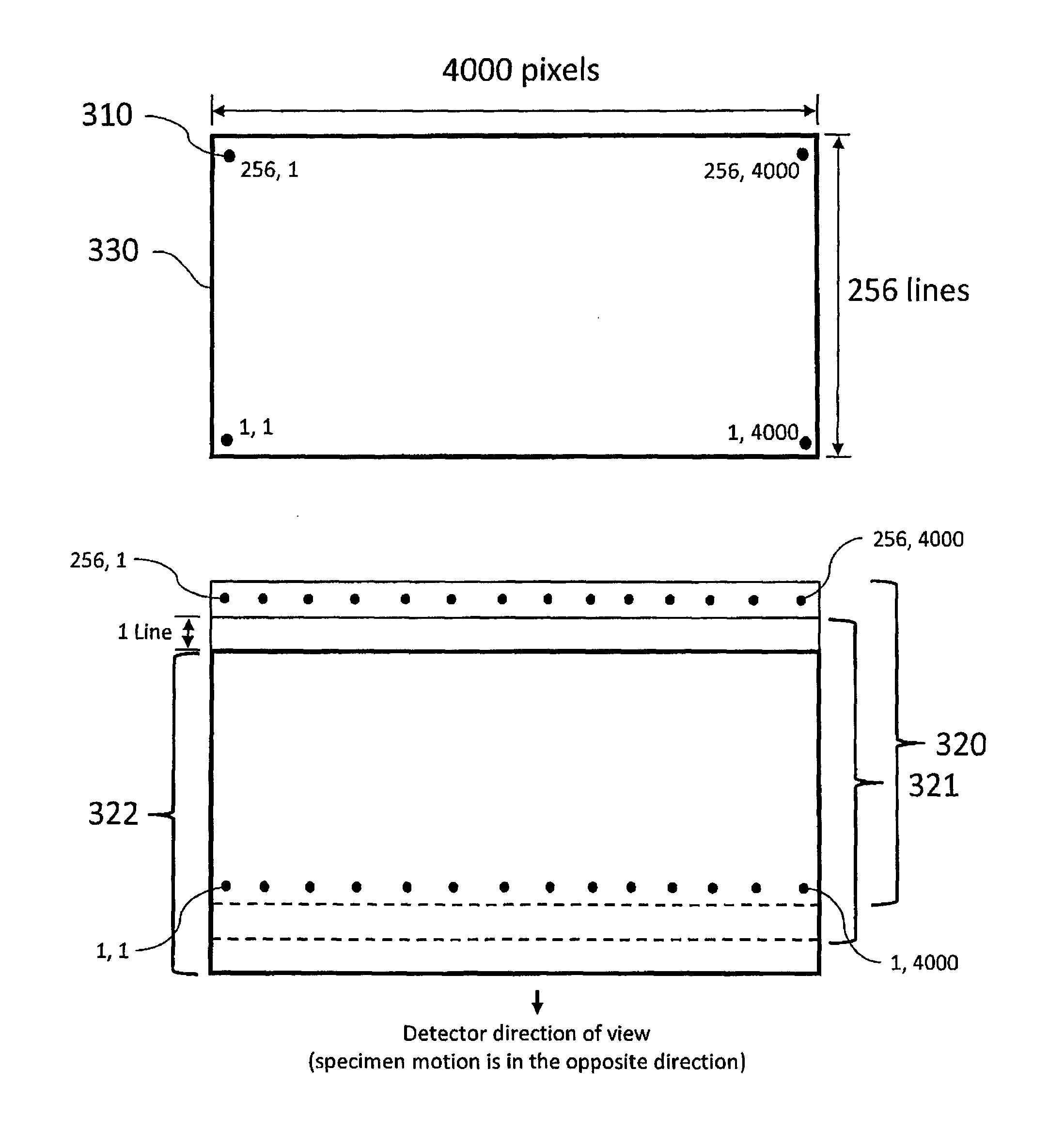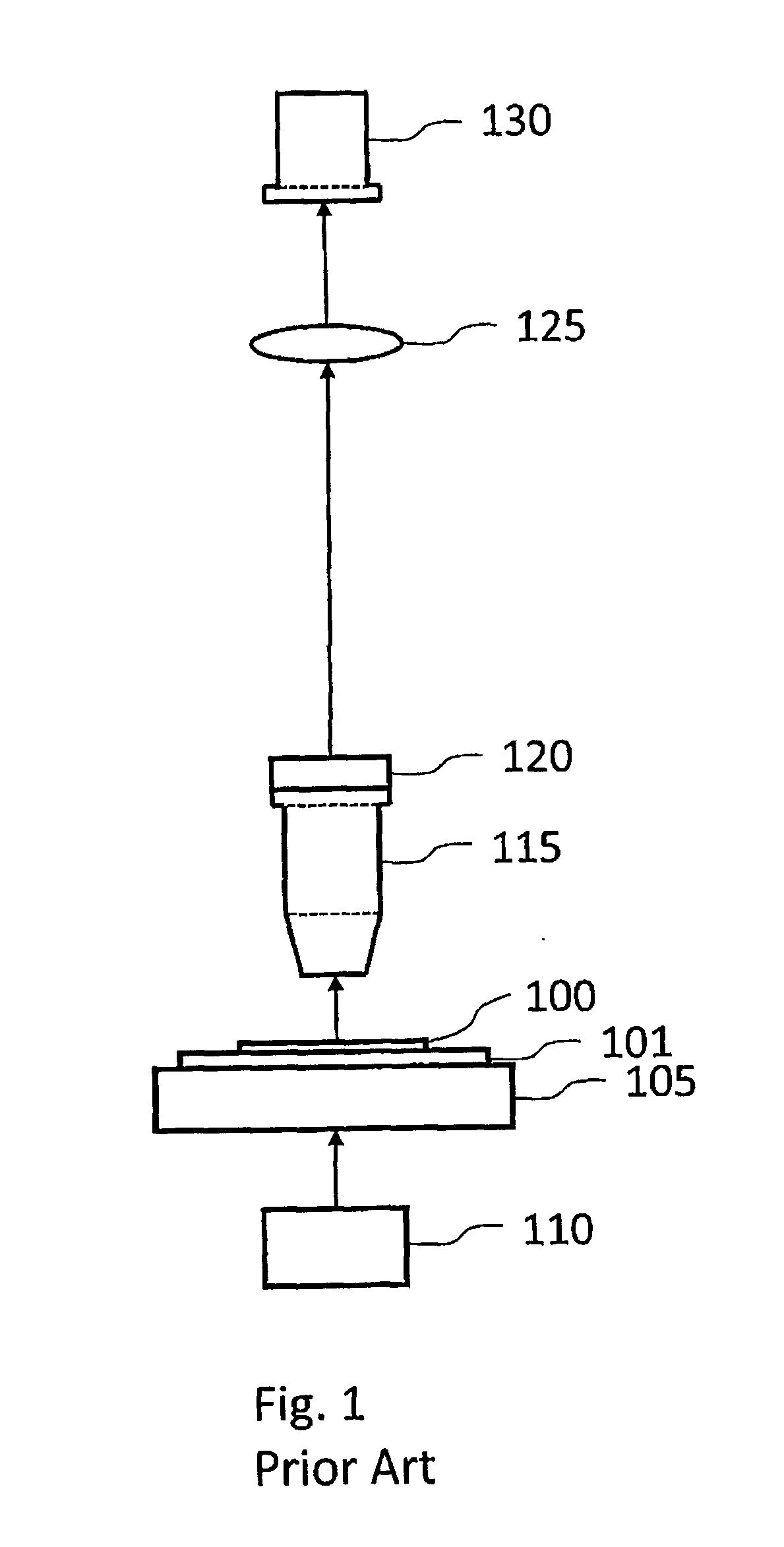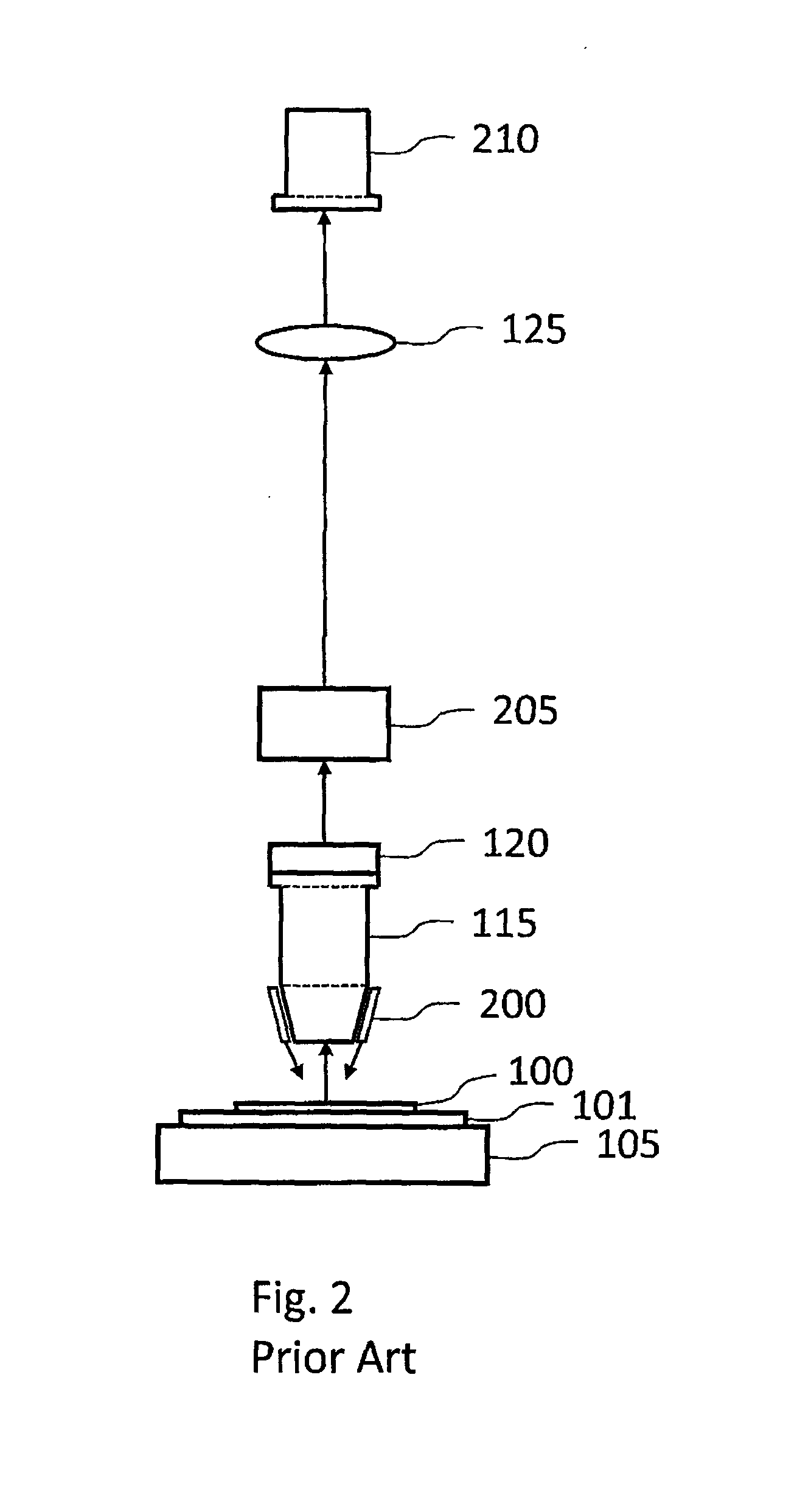3D pathology slide scanner
a slide scanner and pathology technology, applied in the field of microscopic imaging of large specimens, can solve the problems of increasing the chance of tiling artifacts, increasing bleaching, and slow fluorescence imaging of tiling microscopes
- Summary
- Abstract
- Description
- Claims
- Application Information
AI Technical Summary
Benefits of technology
Problems solved by technology
Method used
Image
Examples
first embodiment
[0057]An instrument and method for scanning microscope slides using a CCD or CMOS two-dimensional detector array that adds intermediate image frames acquired every time the microscope slide has moved an incremental distance equal to that between rows of pixels in the final image has been described in U.S. Patent Application Ser. No. 61 / 427,153, “Pathology Slide Scanner”, by A. E. Dixon. The instrument described in that application (which has not been published) has all of the advantages of a slide scanner that uses a TDI array, but uses inexpensive two-dimensional arrays instead. In addition, since the final image is the sum of a large number of intermediate image frames, each intermediate frame being displaced a distance equal to the distance between rows of pixels in the final image, it can have a larger dynamic range than that supported by the detector array, and this increased dynamic range enables multiple fluorophores to be imaged simultaneously using separate detector arrays ...
second embodiment
[0060]FIG. 5 shows a slide scanner for transmission imaging that is this invention. A tissue specimen 100 (or other specimen to be imaged) is mounted on microscope slide 101 (or other sample holder) on a scanning stage 105. For transmission imaging, the specimen is illuminated from below by light source 110. Microscope objective 500 (or other imaging objective) is tilted with respect to the specimen 100 and focuses light from the specimen onto two-dimensional detector array 410, which is perpendicular to optical axis 430. When focused by lens 500, light from tilted object plane 550 in specimen 100 is collected by detector pixels in image frame 520. Light from the top of specimen 100 at position 521 will be focused on a pixel in the row of pixels at position 522 on image frame 520, and light from the bottom of the specimen at position 523 will be focused on a pixel at position 524 on image plane 520. Each row of pixels in detector 410 (rows pointing into the paper in this figure) col...
third embodiment
[0062]FIG. 6 shows a slide scanner for transmission imaging that is this invention (a preferred embodiment). A tissue specimen 100 (or other specimen to be imaged) is mounted on microscope slide 101 (or other sample holder) on a scanning stage 105. For transmission imaging, the specimen is illuminated from below by light source 110. A combination of infinity-corrected microscope objective 115 (or other infinity-corrected imaging objective) and tube lens 125 focuses light from the specimen onto two-dimensional detector array 410, which is tilted with respect to the plane of the microscope slide about an axis that is in the plane of the microscope slide and is perpendicular to the direction of stage motion. When focused by objective 115 and tube lens 125, light from tilted object plane 450 in specimen 100 is collected by detector pixels in image plane 420. Light from the top of specimen 100 at position 421 will be focused to a parallel beam by objective 115 (the outside of this parall...
PUM
| Property | Measurement | Unit |
|---|---|---|
| distance | aaaaa | aaaaa |
| distance | aaaaa | aaaaa |
| thick | aaaaa | aaaaa |
Abstract
Description
Claims
Application Information
 Login to View More
Login to View More - R&D
- Intellectual Property
- Life Sciences
- Materials
- Tech Scout
- Unparalleled Data Quality
- Higher Quality Content
- 60% Fewer Hallucinations
Browse by: Latest US Patents, China's latest patents, Technical Efficacy Thesaurus, Application Domain, Technology Topic, Popular Technical Reports.
© 2025 PatSnap. All rights reserved.Legal|Privacy policy|Modern Slavery Act Transparency Statement|Sitemap|About US| Contact US: help@patsnap.com



